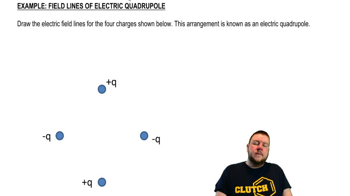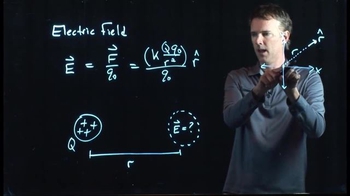24. Electric Force & Field; Gauss' Law
Electric Field Lines
Learn with other creators
Practice this topic
- Open Question
Draw the field lines for a pair of identical, positive charges.
830views31rank1comments - Textbook Question
Draw, approximately, the electric field lines emanating from a uniformly charged straight wire whose length ℓ is not great. The spacing between lines near the wire should be much less than ℓ. [Hint: Also consider points very far from the wire up to 4ℓ \.]
726views - Textbook Question
Draw, approximately, the electric field lines about two point charges, +Q and -3Q, which are a distance ℓ apart.
518views - Textbook Question
FIGURE EX24.3 shows a cross section of two infinite parallel planes of charge. Draw this figure on your paper, then draw electric field vectors showing the shape of the electric field.
51views - Multiple Choice
Which of the following statements about electric field strength at a point is correct based on the pattern of electric field lines?
4views - Multiple Choice
Given a diagram showing a positive point charge and a dot located near it, which arrow best represents the direction of the electric field vector at the position of the dot?
13views - Multiple Choice
Which statement best describes how indicate the strength of the at a given point?
10views - Multiple Choice
Electric field lines can never cross. What would crossed electric field lines indicate?
11views











